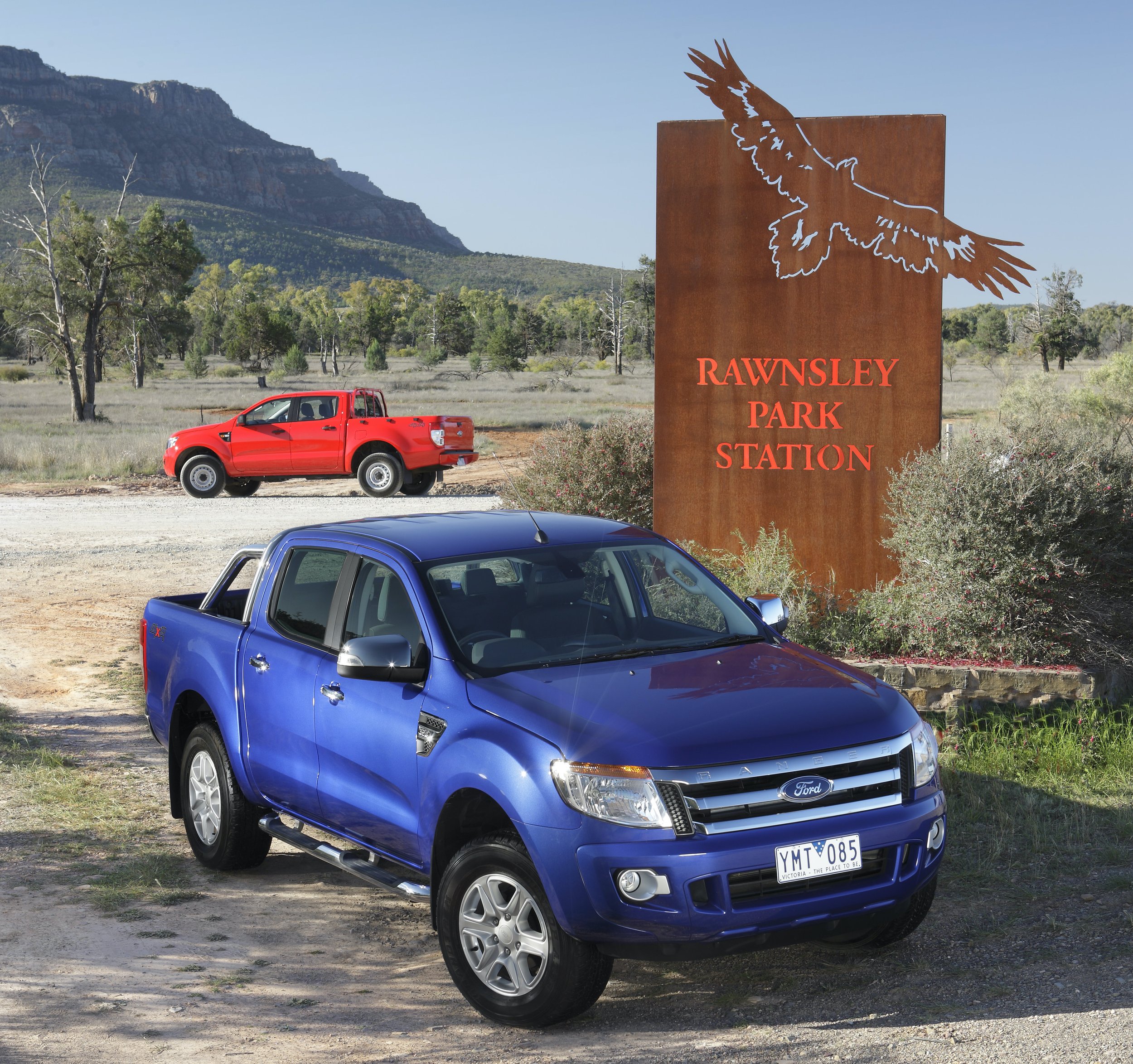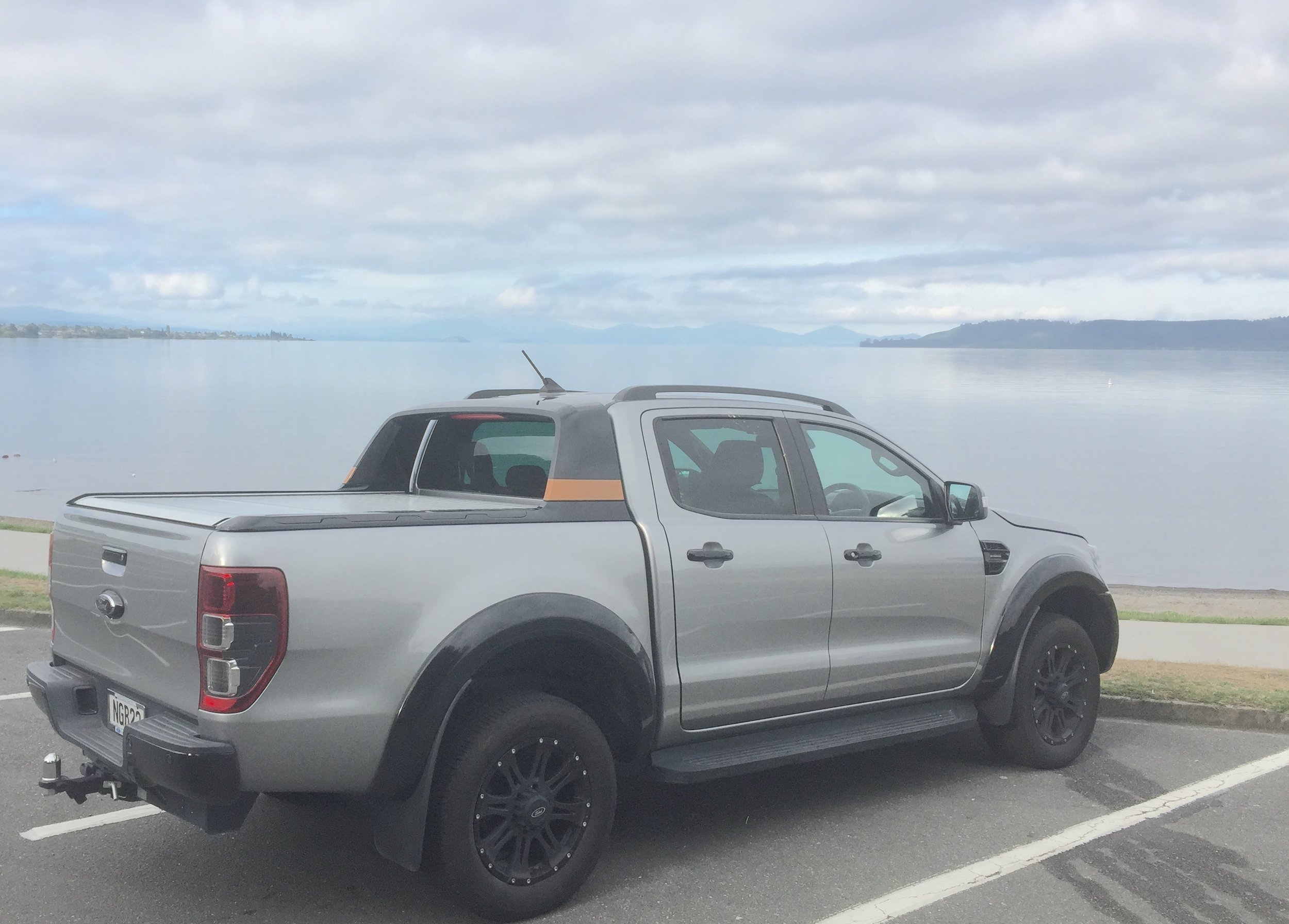Ford Ranger Wildtrak X roadtest review: Working class hero farewelled
/With the new gen lineup almost here, it seems right to take the outgoing T6 on one last drive to celebrate its success and discuss the ‘x-factor’ that took it to the top.
Price: $75,490
Powertrain and economy: 2.0-litre four cylinder biturbo diesel, 157kW/500Nm, part-time 4WD, official combined economy 8 L/100km (8.5 L/100 on test), 211g/km CO2.
Vital statistics: 5426mm long, 1860mm wide, 1848mm high, 3220mm wheelbase. Tow rating 3500kg.
Like: X treatment a great look, drivetrain brilliant, high comfort and safety specification.
Don’t like: Rear tub isn’t wide enough.
BACK in October of 2011 I went to South Australia with Ford to meet their home-grown Ranger.
After presentations at an Adelaide hotel, we flew by chartered plane to drive it at Rawnsley Park Station, adjacent to Wilpena Pound - which looks like a meteor impact crater, but was formed naturally.
It was a fascinating experience. Ford was so confident in its ute being a winner they had the three prominent opposition utes of the day there to compare against. Blue Oval engineers explained why they felt theirs was the superior product when measured against the Toyota Hilux, Nissan Navara and Volkswagen Amarok.
Journalists were shown how engineers had moved the new ute’s B-pillar forward 100mm so tall men could enjoy improved rear seat access. How there was no division bar in the rear side windows so visibility could be improved. How there was extra cabin sealing so air ‘leakage’ could be improved by 50 percent. How the lower portion of the ute was sufficiently protected to give it a wading depth of 800mm.
It went on and on. How it was bigger in every dimension except height than the Hilux. How the new Ranger’s T6 chassis was two times stiffer than the Ranger it replaced. How thanks to that chassis and its turbo diesel it could tow 3350kg and carry up to 1500kg. How the engine was so torquey that – and we all tried this – it could pull the ute back up to speed from below 50kmh in sixth (then top) gear.
The new Ranger also looked good. Its lines were chunky and athletic, with a chamfered edge running along the doors. I was impressed. This new ute, I (and others) reasoned, might just have the goods to compete against Hilux, at the time the category king.
Nothing changed in Ranger’s first full year in New Zealand, Hilux outsold the new contender two-to-one. In 2013, Ranger took ground. A lot of ground. It ended the year just 117 sales behind Hilux.
The year after that, Ranger became the country’s top-selling ute; 6330 registrations against 5774. The Toyota has been in the Ford’s rear vision mirror since. Last year was Ranger’s best; 12,580 sold. That was 4150 units more than Hilux.
In its entire duration of sale here, more than 81,000 Rangers have found homes. That’s way ahead of anything else.
It really has been a massive success story, maybe almost too good for Ford. It sells a lot of Rangers, but not a lot of anything else. Last year Ford accrued 17,286 passenger and commercial registrations. Ranger accounted for 72.7 percent of those. In the two months of this year, Ranger’s taken a 78 percent share of Ford NZ business.
That’s not dissing any of the other Ford product. Focus is lovely, Puma even better. I considered and Escape PHEV an outstanding drive of 2021. And there is the Everest, built off the Ranger.
Why has the T6 Ranger been such a success?
I think it boils down to street cred. Ranger has always been a good-looking vehicle in a muscular sort of way, and over the years Ford NZ has successfully produced value-added variants and models that have added to the vehicle’s appeal as lifestyle product. Wildtrak and Raptor being outstanding examples.
Powertrains have refined, too. When the T6 first launched in New Zealand it was powered by a 147kW/470Nm five-cylinder 3.2-litre turbo diesel that did this ute proud. But now the engine of choice is a four cylinder 2.0-litre bi-turbo diesel that offers 157kW of power and 500Nm of torque.
T6 Ranger is now coming to an end; the replacement T6.2 has been unveiled. Ford NZ plans to display it at the June 15-18 National Fieldays at Mystery Creek. Sale commences thereafter.
Regardless pricing remains under wraps and, likewise, full specifications, close to 2000 forward orders have been placed. It seems obvious Ranger’s popularity is going to continue.
So what do we know about the T6.2 Ranger? We know that the 3.2-litre engine will be retired, but some versions will continue to be powered by the 2.0-litre bi-turbo mated to the current 10-speed automatic. We also know that arrival of the vehicle will mark introduction of essentially the same 3.0-litre V6 diesel as that currently aboard the F-150 pickup.
This represents a bit of back to the future for Ford, because this Power Stroke 3.0 V6 is from Ford’s ‘Lion’ engine family, which means it is related to the 2.7-litre V6 turbo diesel that powered the Aussie-built Territory discontinued in 2016.
The new Ranger will continue to be built on the current platform, but the vehicle will be 50mm longer and its track will be 50mm wider. And this will overcome one of the current model’s faults – the tub will be wide enough to accommodate a full-size pallet.
But all that is in the future. For one last drive of the T6 Ranger before it consigns to motoring history, I’m in a Wildtrak X, the most highly specified and expensive standard T6 Ranger, surpassed only by the $85,490 Raptor.
X? Because it is fitted with an X Pack, delivering a black nudge bar with a light bar, 18-inch black alloy wheels with a 35mm offset, black wheel arch flares, a unique grille with orange accents, a rear sail plane also with the orange accents, black side steps, and a range of other black exterior treatments including roof rails, load box rails, exterior mirrors, door handles, and the rear bumper.
Special interior accents include unique seat trim and accent colours, and illuminated scuff plates.
It all adds up to what is a highly appealing Ranger – a far cry from the sort of basic rural/trades vehicle that our Prime Minister, who in a famous foot-in-the-mouth moment last year, said expects of a “legitimate” ute. Instead it’s a well specified activity vehicle that is just as home in the urban settings, which explains why thousands of city dwellers own them.
There have been media reports in Australia that Ford has been quietly ‘de-speccing’ the Ranger not only as a result of semi-conductor shortages caused by the Covid-19 pandemic, but also as a normal result of the T6 winding down to the end of its model life.
Even so, there didn’t seem to be anything missing from our ute. For example, it still had its engine stop-start which has apparently been removed in Aussie, which has resulted in a slight increase in fuel consumption. The only thing I noticed missing was exterior decals indicating this was a Wildtrak X.
Ranger’s true environment is the great outdoors. Where better to head from my hometown, New Plymouth, than to Lake Taupo, one of this country’s recreational jewels?
Turangi near the lake’s southern shore is a very ‘trouty’ town, the base camp for fishing along the world-renowned Tongariro River. Each year scores of anglers make their way there to fish for the estimated 50,000 prime trout that enter the river on their annual spawning runs.
My four hour drive was an easy journey for the Wildtrak X. I first visited some of the river’s famous pools before heading to the very good National Trout Centre to learn all about not only this famous fish but also many of our native freshwater species. If you want to see trout close-up, head to there – there are thousands of them there, from fingerlings to monsters.
There’s probably not a lot that needs to be said about the Ranger, because so many tens of thousands of kiwis already drive the ute and know all about its strengths.
In Wildtrak X guise it marks the perfect end to the T6 career. It remains a tough ute, but there are certain newer features aboard that improve the ute experience, such as an assisted tailgate, and a power roller shutter that can be operated via a choice of the key fob, button in the cabin, or button in the rear tub.
The interior is very well specified and comfortable, and there is also the high level of safety specification.
Ranger will depart on a high – but also perhaps with a bit of a sting. It is destined to go up in price with the April 1 introduction of ute tax. Government’s punishment for being fossil fuelled.
That’s on assumption there will be any T6 Rangers left to sell anyway. Ford NZ only has around 3000 left in stock and the plant in Thailand curtails production this month. Will that be sufficient to see things through until arrival of the T6.2? On current demand, it seems unlikely.
Ford NZ will be thanking its lucky stars it has had the T6 Ranger. It is hard to imagine the brand being able to exist here without it.






















